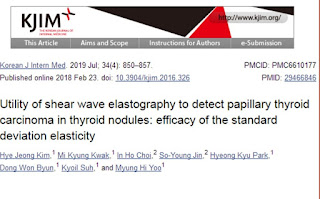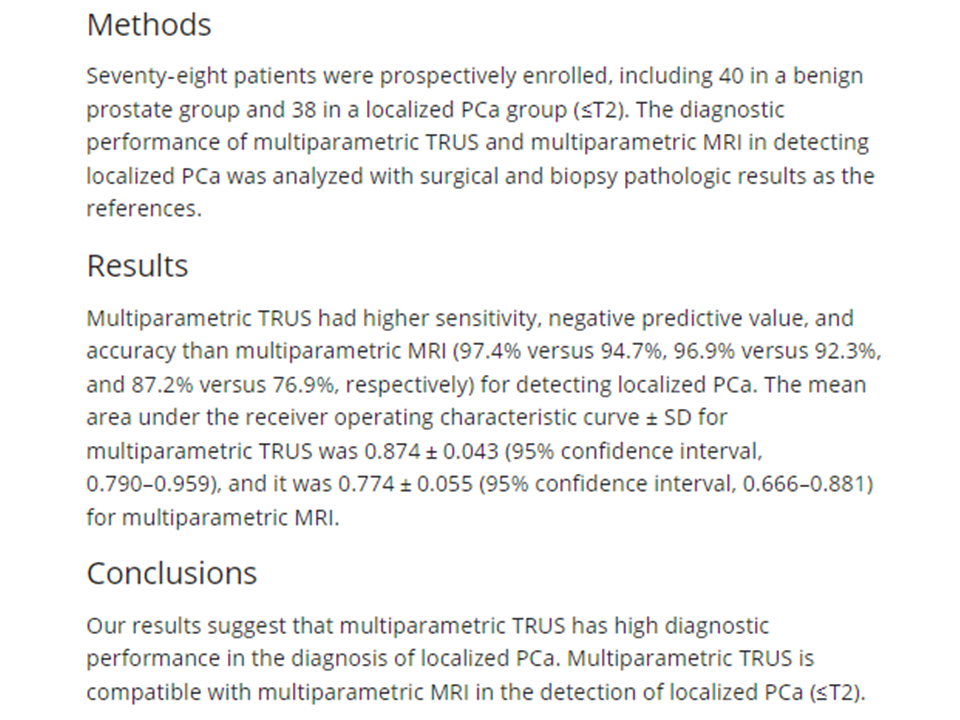By Kate Madden Yee, AuntMinnie.com staff writer
August 15, 2019 -- Using a combination of different elastography methods reduces unnecessary biopsies of BI-RADS 4 lesions without increasing the risk of missing cancers, according to a new study published in the September issue of Ultrasound in Medicine and Biology.
The findings suggest a better way to deal with BI-RADS 4 lesions, which can be tricky to assess for their potential to become malignant, according to a team led by Dr. Jing Han of Sun Yat-Sen University Cancer Center in Guangzhou, China.
"BI-RADS category 4 lesions exhibit a broad range of malignant potential (2% to 95%)," the group wrote (Ultrasound Med Biol, September 2019, Vol. 45:9, pp. 2317-2327). "Therefore, it is necessary to develop a noninvasive and reliable method to discern low-risk lesions as a complement to conventional ultrasound to reduce the unnecessary biopsy rate. Elastography has potential to serve as this valuable tool."
A key modality
Ultrasound is an important modality for breast cancer screening and differentiating benign from malignant lesions, but high false-positive rates can lead to unnecessary biopsies -- making the problem of reducing biopsy of benign lesions without missing cancers a key clinical issue, according to Han and colleagues. Ultrasound elastography may be just the ticket, they noted.
"Ultrasound elastography is beneficial for differentiating breast lesions in many studies," the team wrote. "This technique, which is sensitive to tissue stiffness, has been conducted as a complementary modality for improving breast lesion characterization."
There are a number of elastography techniques: strain (SE), shear wave (SWE), virtual touch imaging (VTi), and virtual touch imaging quantification (VTIQ). Each has its benefits and limitations, and studies have shown that using conventional ultrasound with a single elastography technique can reduce false-positive rates but also increase false-negative rates. Han and colleagues sought to investigate what combinations of strain elastography, VTi, and VTIQ might reduce false positives without increasing false negatives in evaluating BI-RADS category 4 lesions.
The study included 267 patients with 278 BI-RADS 4 lesions who were scheduled for ultrasound-guided biopsy between January 2016 and May 2017. Of the 278 lesions, 151 were benign and 127 were malignant. All were evaluated with conventional B-mode ultrasound, strain elastography, SWE, VTi, and VTIQ (SWE was used with VTIQ; the researchers did not break it out as an individual elastography category for assessment).
Han and colleagues evaluated the following factors: diagnostic performance (including area under the receiver operating characteristic curve, or AUC) sensitivity, specificity, accuracy, positive predictive value (PPV) and negative predictive value (NPV).
The group found that VTi alone showed the highest negative predictive value at 91.7%, although combined methods showed higher negative predictive value than single methods, with the highest negative predictive value at 100% when VTi, SE, and VTIQ were combined.
Han's team also found that, compared with conventional ultrasound, positive predictive value increased from 45.7% to 63.1% when combined elastography was added (VTi plus SE plus VTIQ). Of the BI-RADS 4 lesions, 52.5% were downgraded when using a combination of VTi plus SE, and 50.8% were downgraded when using VTi plus strain elastography plus VTIQ -- without missing any cancer.
| Performance of elastography techniques for reducing unnecessary biopsy of BI-RADS 4 breast lesions | |||||||
| Performance measure | SE | VTi | VTIQ | VTIQ plus VTi | VITQ plus SE | VTi plus SE | VTi, SE, & VTIQ |
| Sensitivity | 89.7% | 92.1% | 85% | 96.8% | 98.4% | 99.2% | 100% |
| Specificity | 63.5% | 73.5% | 84.7% | 67.5% | 59.6% | 52.9% | 50.9% |
| Accuracy | 75.5% | 82% | 84.9% | 80% | 77.3% | 74.1% | 73.4% |
| PPV | 67.4% | 74.5% | 82.4% | 71.5% | 67.2% | 63.9% | 63.1% |
| NPV | 88% | 91.7% | 87% | 96.2% | 97.8% | 98.7% | 100% |
| AUC | 0.82 | 0.84 | 0.90 | 0.82 | 0.79 | 0.76 | 0.75 |
As for statistical significance, the group found that the specificity and area under the receiver operating curve of VTIQ were significantly higher than those of SE and VTi, and the sensitivity of combined methods was significantly higher than single methods.
Effective combinations
More research is needed to determine the role of combined elastography techniques in reducing unnecessary biopsies of BI-RADS 4 breast lesions, according to Han and colleagues.
"Our initial clinical result revealed that the combination of different types of elastography could improved the sensitivity and negative predictive value, which might serve as a complementary approach to conventional ultrasound to ... reduce unnecessary biopsy for benign breast lesions," the team concluded. "Further studies with a larger population are required to validate our results."






















